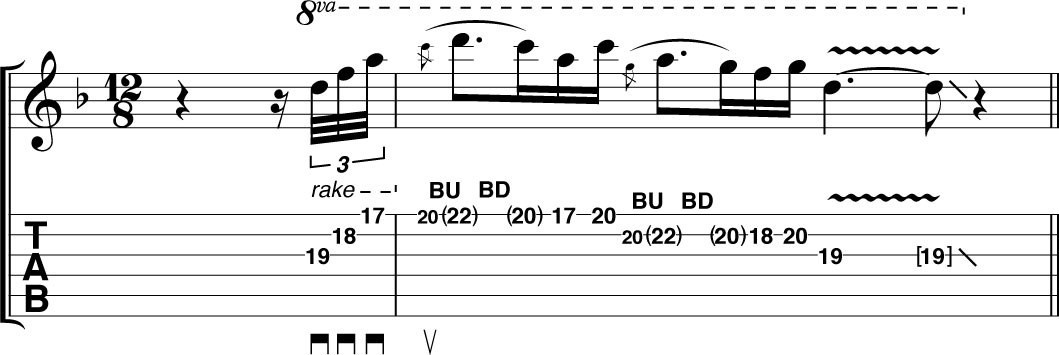How to play guitar like David Gilmour: Bluesy diads, slides, quarter-tone blues curls and more
Learn some 'Floyd-ian slips

"David's smooth and perfectly-intonated bends are present in almost every solo"
At the heart of David Gilmour's playing is some very soulful blues vocabulary with precise string bending, awareness of space and rests, lyrical vibrato and excellent intonation. His famous two-step two-tone bend can be heard on anything from Shine On You Crazy Diamond to Another Brick In The Wall (Part II).
Bluesy diads, slides and quarter-tone blues curls are evident in tracks such as Money and Comfortably Numb. David's smooth and perfectly-intonated bends are present in almost every solo, but particularly good examples that use a nice wash of delay can be heard in What Do You Want From Me and Hey You.
Pre-bends and slides

The key here is not bending too sharp. The bends should sound lazy and slightly out of tune to create a laid-back bluesy tension over the D minor backing.
Pre-bends and slides tab (right-click to download)
Pre-bends and slides audio (right-click to download)
Homage to the kings

David borrows typical blues phrasing from greats such as BB King and Albert King. The blues lick starts an eighth note before the first full bar of music.
Homage to the kings tab (right-click to download)
Homage to the kings audio (right-click to download)
Bluesy diads

Try rotating your fret hand to the side to execute the quarter-tone bend. The rest of the notes come from the D minor pentatonic scale.
Get the MusicRadar Newsletter
Want all the hottest music and gear news, reviews, deals, features and more, direct to your inbox? Sign up here.
Bluesy diads tab (right-click to download)
Bluesy diads audio (right-click to download)
Three-semitone bend lick

Practise the three-semitone bend by fretting the 18th-fret second-string F note first. This will attune your ear to the target pitch.
Three-semitone bend lick tab (right-click to download)
Three-semitone bend lick audio (right-click to download)
Two-step two-tone lick

Gilmour's trademark bend is played in two stages. First, bend up a full tone, then release slightly just before the final push up to the full two tones.
Two-step two-tone lick tab (right-click to download)
Two-step two-tone lick audio (right-click to download)
Triplet pull-offs

Try hybrid picking if you're getting note bleed between the two strings: pick the second string with your pick and the first string with a finger.
Triplet pull-offs tab (right-click to download)
Triplet pull-offs audio (right-click to download)
Rake and high bend

The typical blues/jazz rake spells out a D minor arpeggio and still stays within the familiar territory of a minor pentatonic 'box' shape.
Rake and high bend tab (right-click to download)
Rake and high bend audio (right-click to download)
Using multiple positions

Getting comfortable with Gilmour's use of multiple scale positions will further your understanding and freedom in terms of improvising.
Using multiple positions tab (right-click to download)
Using multiple positions audio (right-click to download)
More: learn four great David Gilmour signature Pink Floyd guitar chords
Total Guitar is Europe's best-selling guitar magazine.
Every month we feature interviews with the biggest names and hottest new acts in guitar land, plus Guest Lessons from the stars.
Finally, our Rocked & Rated section is the place to go for reviews, round-ups and help setting up your guitars and gear.
Subscribe: http://bit.ly/totalguitar
You must confirm your public display name before commenting
Please logout and then login again, you will then be prompted to enter your display name.










